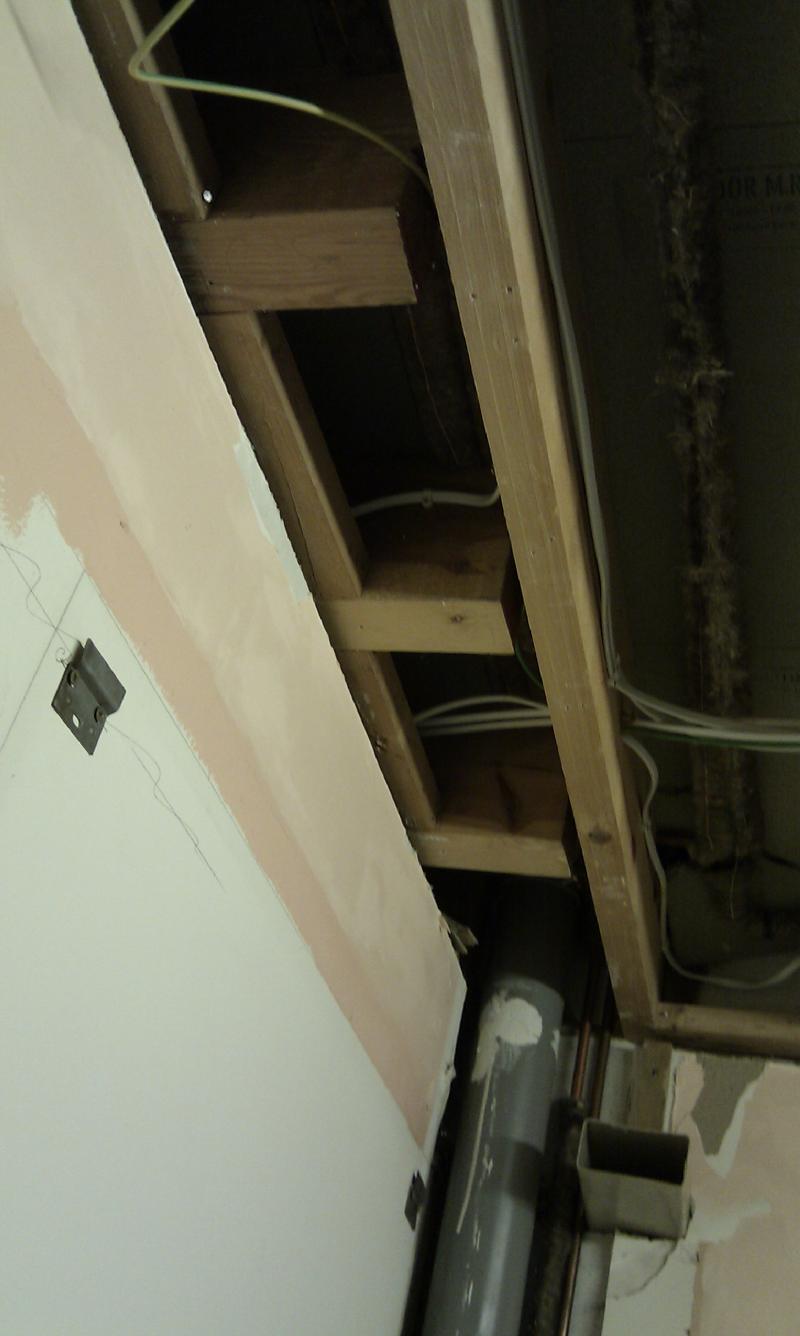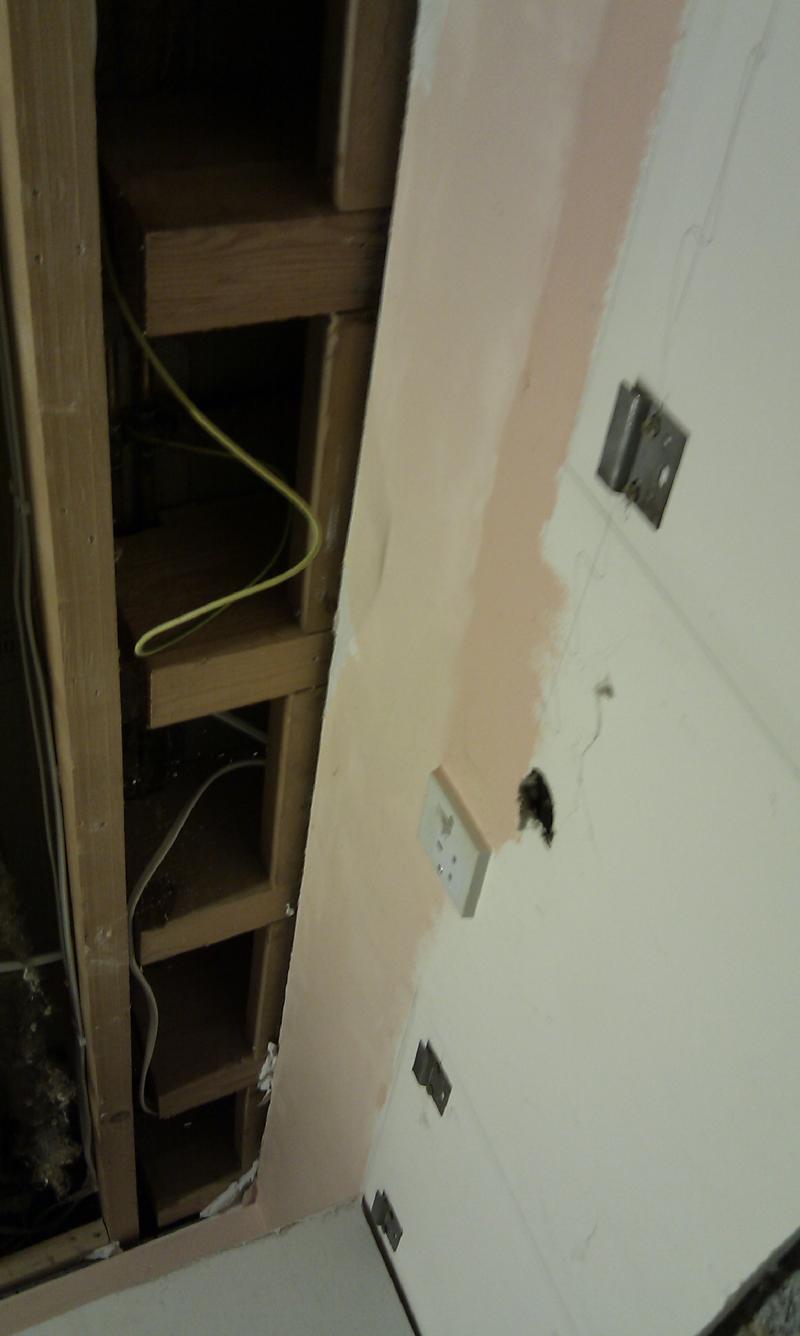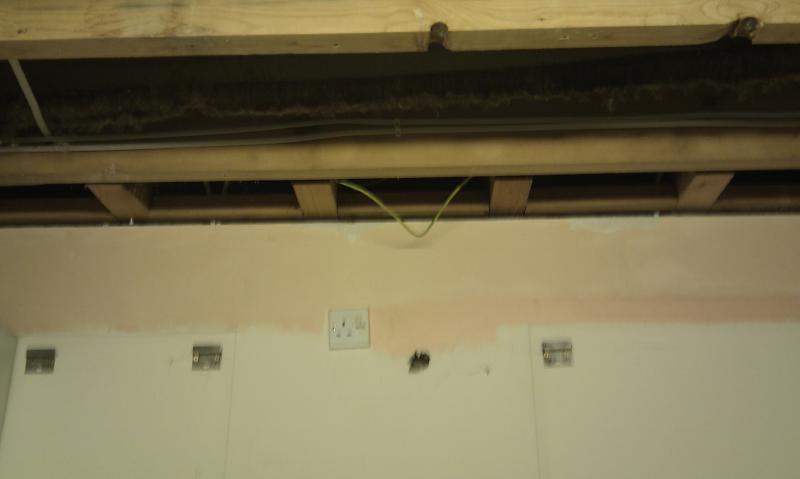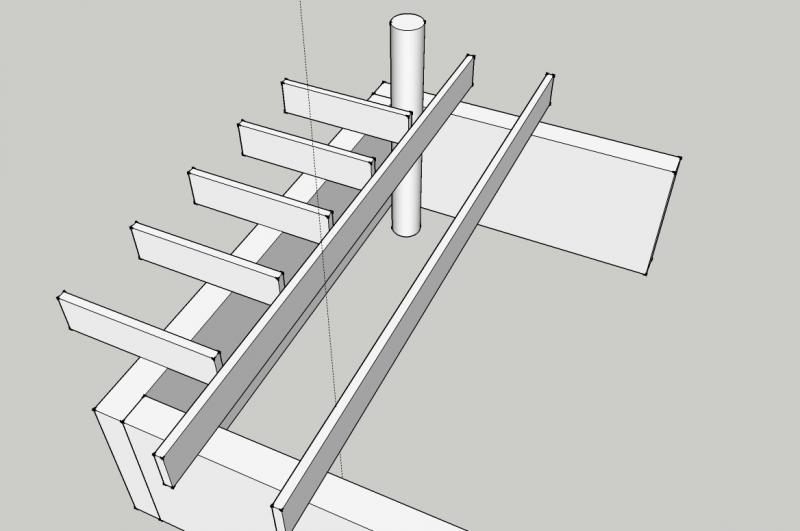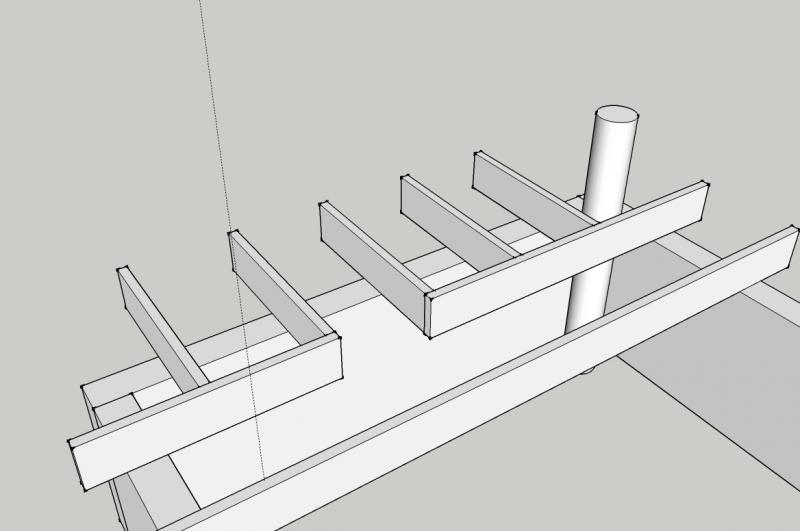We are currently in the process of installing our kitchen and have bought a chimney style extractor, so the ducting (ideally 150mm) would normally go up the chimney into the ceiling\floor void and run to the external wall.
The problem that we are faced with is that the void between the two rafters that the chimney goes into has a soil pipe coming down through it just by the wall. Since taking the ceiling down we can now also see that the rafters from the adjacent room run perpendicular to the kitchen rafters and overhang into this same void.
Here are some pictures:
In this one you can see the soil stack at the end of the rafters and also the overhanging rafters from the adjacent room:
Normally I would never consider cutting a rafter however I was wondering if we could pack out the gap between the rafter and overhanging rafters, and then screw\bolt them together. Something like this:
Before:
After:
In the picture I have shown the section of joist taken complete out this would not be completely necessary, but a significant hole would need to be made into it.
Does anyone have any thoughts? My alternative plan is to have a fake ceiling that is 100mm lower and extends about 450mm away from the wall so that the ducting can run under the joist and into the adjacent void, however this won't look as neat.
The problem that we are faced with is that the void between the two rafters that the chimney goes into has a soil pipe coming down through it just by the wall. Since taking the ceiling down we can now also see that the rafters from the adjacent room run perpendicular to the kitchen rafters and overhang into this same void.
Here are some pictures:
In this one you can see the soil stack at the end of the rafters and also the overhanging rafters from the adjacent room:
Normally I would never consider cutting a rafter however I was wondering if we could pack out the gap between the rafter and overhanging rafters, and then screw\bolt them together. Something like this:
Before:
After:
In the picture I have shown the section of joist taken complete out this would not be completely necessary, but a significant hole would need to be made into it.
Does anyone have any thoughts? My alternative plan is to have a fake ceiling that is 100mm lower and extends about 450mm away from the wall so that the ducting can run under the joist and into the adjacent void, however this won't look as neat.


